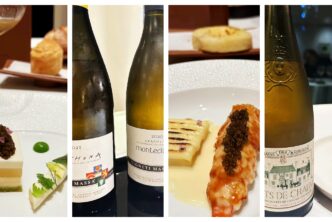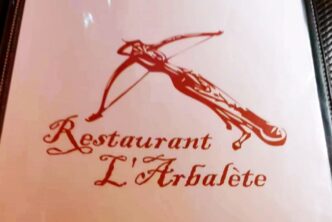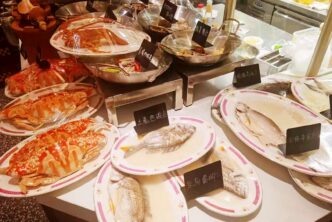Crush
819 Shaanxi Bei Lu,
near Changping Lu
Jing’an District
Tel. +86 6219 9005
The food
Frites & aioli (hand cut fries with stone mustard aioli)
Iberico arancini with smoked pepper aioli, sweet chili jelly, truffle
Yellowfin tuna arancini with smoked chimichurri aioli, sweet pepper gremolata
Charcuterie board (mortadella, Iberico chorizo, SanDdaniele ham)
The Answer (48 hr fried chicken, creamy dill picnic slaw, Tennessee maple hot -half bird)
The Crusher (170 grams of dry-aged, house ground, M3 Wagyu burger, with house cured bacon, smoked provolone on our home made bun with fries or pickled vegetables)
The wines
Barmès-Buecher 2020 Cremant d’Alsace Brut Nature 91
Artadi 2016 Hondarrabi Zuri Izar-Leku Pays Vasco 92
Goisot 2020 Corps de Garde Saint-Bris 92
Terroir al Limit 2019 Arbossar Priorat 92
Terroir al Limit 2013 Les Tosses Priorat NR (not rated)
Crush in Shanghai is one of those rare dining establishments that takes a tried-and-true formula that everyone else is also following, but pulls it off so much better than most. How many bistro-type spots do you know that serve California-style, Pan-Asian influenced food? Plenty, I bet. But how many of them are really worth going back to? Well, Crush is one of them. First off, the dining space is at once casual and relaxing, yet remarkably sleek and elegant; Crush looks more expensive than it is, and there’s an almost luxurious feel to its simple environment. It helps that the place is super-fashionable and is always populated by a bevy of well-dressed, cool-looking hipster ex-pats and Chinese nationals, making the vibe inside that much more enjoyable. In that regard, Crush is a place where it’s easy to meet others you don’t yet know (there’s solo seating at the bar for example, but tables and booths are set up in such a way it’s not difficult to strike up a convo if that’s your wish). It isn’t really the reason why people frequent its space (not the main one, at least) but hey, it’s another option that is at your fingertips when you step into the space.
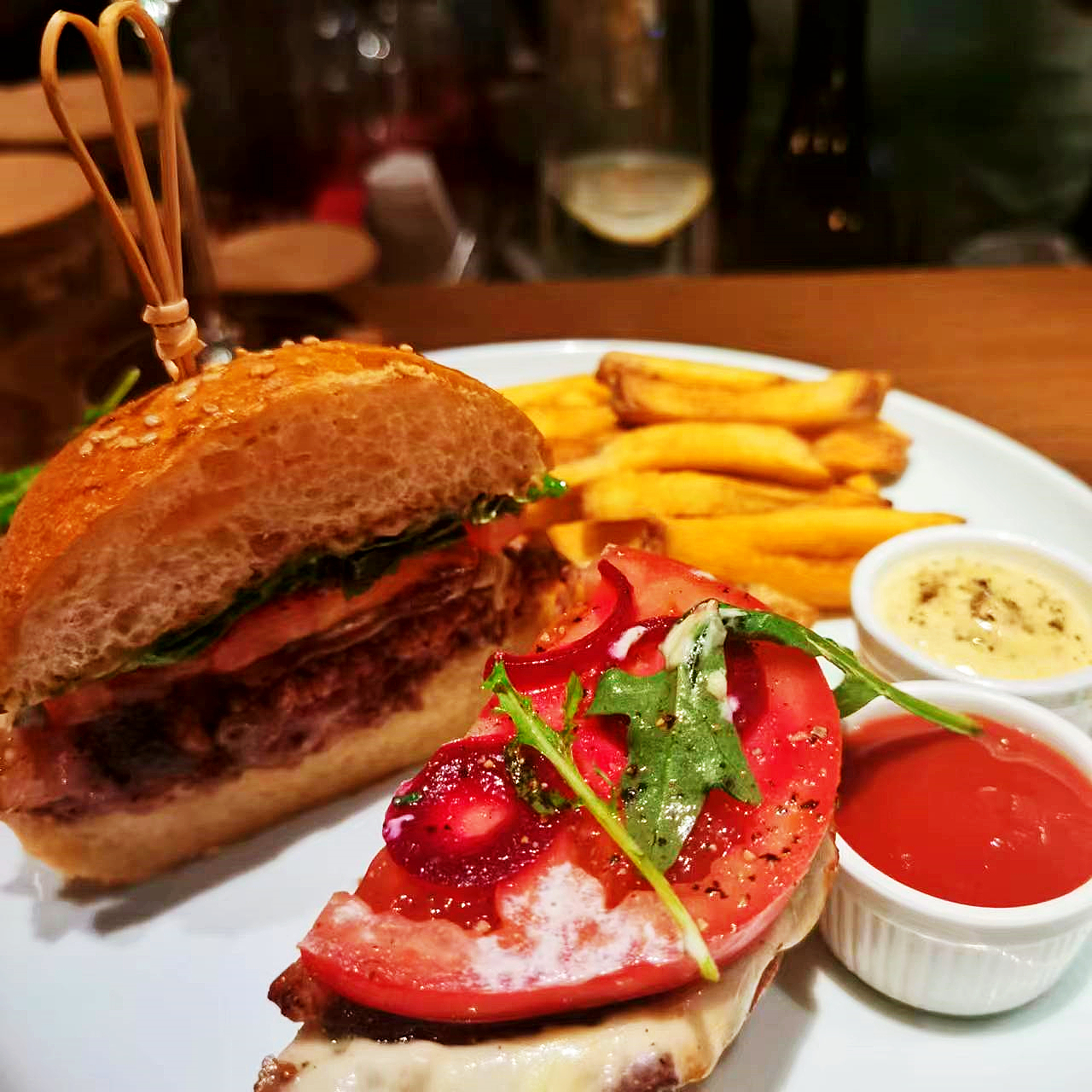
But clearly, that would all be moot if the food and wine at Crush weren’t so darn good. Crush’s owner, Elliot Shay, is extremely serious about food and wine, as is his chef, and the two make a formidable tandem. Shay was born in NYC but spent most of his life in Boston. He opened Crush in 2021, but his main business is that of wine importer (his company is called Vault Wines: it carries about fifteen different wineries and also has a wine platform featuring those wines but those obinf some of his favourite distributors too). Elliot’s passion runs deep, and we actually bump into each other regularly almost every week or so if not at the restaurant then at wine tastings held all over the city. Wine is therefore all-important at Crush, but so is the food: Shay has been owning and running restaurants all his life, though Crush is the first one he’s ever had in Shanghai. His chef, Dylan Briley, is also an East Coast native (New Hampshire), though he too spent most of his life elsewhere (Utah and Seattle, predominantly). Briley was previously at the Dahlia Lounge in Seattle and worked in Shanghai at the well-known Mr. and Mrs. Bund (a Paul Pairet restaurant, he of Ultraviolet fame) and also at Goga, besides doing consulting work at another handful of Shanghai restaurants.

Shay’s goal with Crush was always to provide Shanghai with exciting food and flavours. The food is classic North American California fusion, but has strong influences from both South and North America, as well as Asia. As much as possible is prepared in-house, including the bread, ice cream, bacon and smoked salmon. It is a real pleasure to hear Elliot and Dylan describe the dishes, as the passion and devotion to their craft is immediately apparent; and provided you are interested in learning what they are doing (rather than focusing just on you date, say), it makes for a fun and memorable experience. Listening to how they prepare their fried chicken and all the work that goes into it is eye-opening, for example. At Crush, wines are carefully sourced so that they can be paired with the food when at their drinking peak, or at the very least, within their optimal drinking window. A grand tasting menu features six courses with wine pairings, and that too changes every couple of weeks. There are twelve wines by the glass that also change every two weeks, as well as red and white wine flights of four different wines each. The wine list counts about 175 different references: Shay likes the ability to change wines on the fly whenever he finds a better vintage or a better price, so having a smaller wine list allows him to move quickly in the best interests of his customers who have by now become accustomed to the young man’s exacting standards, not to mention passion.
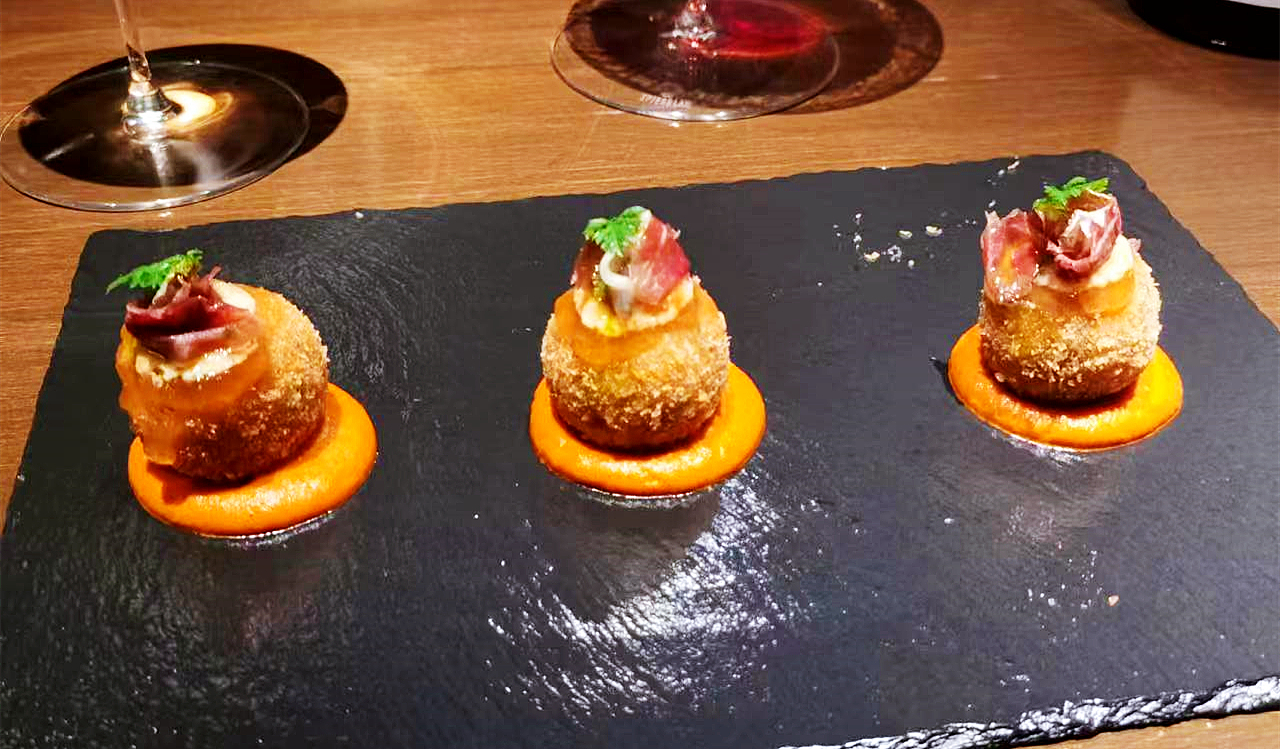
My latest foraging session at Crush went just fine, as is always the case. The two arancini bites (three pieces in each dish) are a great way to start a meal, in the same way that people in Italy might have arancini while walking around window shopping prior to going off to lunch (the only difference is that at Crush you eat them sitting down). It’s honestly hard to choose between the two on Crush’s menu, but I can say they have improved the flavour intensity of the Iberico version, that, while always good already months ago, now packs way more porky punch. Goodness aside (both arancini are super-delicious), the yellowfin arancini might be the winner just on their novelty factor alone. As much as I like burgers (and The Crusher is certainly one serious burger), I have to say that what Crush does perhaps better than anyone in the city is fried chicken. The batter is not just dry and completely grease-free (much like the arancini), but it is remarkably tasty on its own, even without a piece of the glisteningly moist chicken meat it encases. The maple sauce adds a welcome sweetness and kicks up the interest factor even a bigger notch up, to what is already a memorable dish. About the only caveat I might have with some of the food is that the salty element seems strong in a few dishes (certainly the minority), but that’s probably because I eat essentially without salt (so I am especially sensitive to its presence). To be clear, everybody else I have eaten at Crush with has never found too much salt in their dishes, and so this is really a skewed observation on my part meant only to make those who are on low-salt diets aware, and perhaps mentioning when ordering to go easy on it on foods such as the fries and burger, for example (or just get rid of the bacon on the burger, for example). But just so there is no misunderstanding, I repeat that the food at Crush is outstanding and this bistro really does provide one of the city’s tastiest and sneakily creative food experiences.
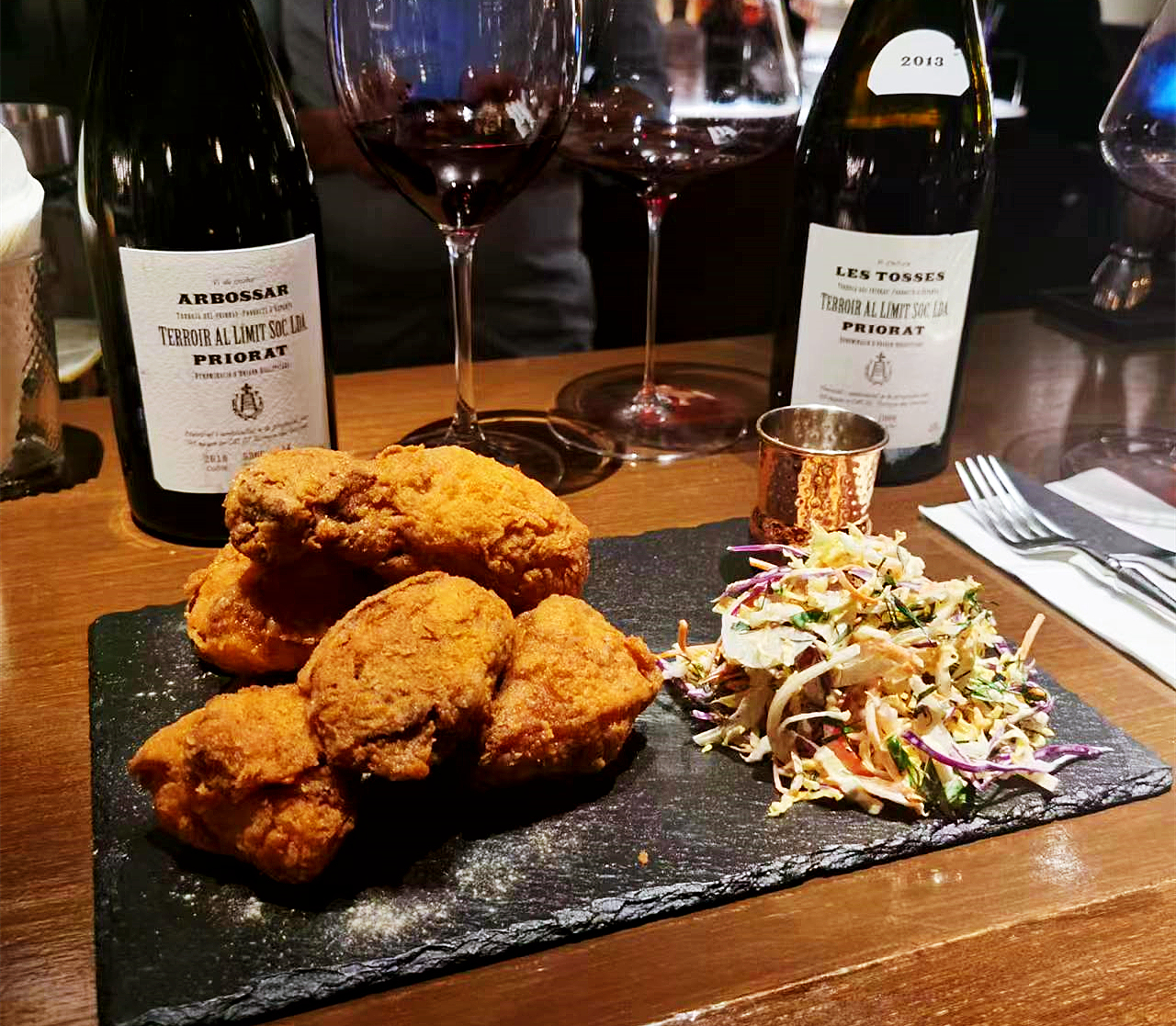
Not just food-wise, but wine-wise too I had a great time. It was certainly so on my latest foray. You’ll be hard pressed to find a nicer family in wine than Geneviève, Sophie and Maxime Barmès of Wettolsheimin Alsace, a quaint little town that is just a stone’s throw away from the better-known Eguisheim. The family makes an almost endless number of wines from many different grapes and crus in each vintage, and their sparkling wines are noteworthy too. The Barmès-Buecher 2020 Cremant d’Alsace Brut Nature is a case in point: bright, easy-going, smooth and ripely fruity, it just glides on the palate leaving a fresh wake of yellow apples and pear behind, complemented by honeyed and sweet spice nuances. It makes for an excellent, easygoing, uncomplicated aperitif that just awakens the taste buds, getting them ready for what’s to follow. Even though this spakler is said to be a more or less even blend of three different grapes (34% Pinot Blanc, 33% Riesling and 33% Pinot Gris) I feel that the Auxerrois (what they call Pinot Blanc in Alsace, even though the two grapes are completely distinct, and their wines too) dominates to a considerable degree here making for a richer spicer more honeyed wine than it would be without its presence. Made with the friendly help of Raphael Bérêche of Champagne, the Artadi 2016 Hondarrabi Zuri Izar-Leku Pays Vasco is a joy. Made by the classic method of secondary fermentation in the bottle (the wine spent about a year on the lees), this is a sparkling wine that is at once rich, dense and saline, boasting fresh, layered aromas and flavours of orchard fruit and minty herbs, even a hint of balsamic oils. Only the second vintage for this wine, it is an absolutely delicious sparkling Txakoli that will get any lunch or dinner rolling in the best of possible directions, for it really is that good. The wine is a joint project the López de la Calle family (of Artadi) and the Zapiain family, a Basque Cider producer of some fame. Once much more common than it is today, the Hondarrabi Zuri is a lovely little white grape (zuri in Spanish means ‘white’) native to the Basque regions of Spain and France, that can also be blended with other local grapes (such as the red Hondarrabi Beltza and the white Gros Manseng) to give even more complex wines. This 2016 vintage from Artadi is 100% Hondarrabi Zuri, planted on a sandstone soil and clay, slate and basalt subsoils (beware what you’ll read on other websites that state the 2016 to be a blend of different Hondarrabi varieties, but to the best of my knowledge, the 2016 vintage is a monovariety Hondarrabi Zuri). The Goisot 2020 Corps de Garde Saint-Bris is delightful, making for a fresh yet creamy aperitif that can stand up to most of the meal easily. Fresh and layered, it packs way above its price class. It also showcases the greatness that can be wines made with Sauvignon Gris instead of Sauvignon Blanc: this wine has none of the pungently green notes the latter grape’s less interesting, far-too-simplistic wines are redolent of, but offers instead real depth and nuance but with plenty of freshness (which can be sauvignon Gris’ Achilles heel at times). While I’m at it, I’ll point out this three-year old wine is still lively and fresh, and is in no danger of faltering anytime soon. So much for Sauvignon Gris giving flabby wines that have no aging potential. The Saint-Bris Appellation is the only one in Burgundy that is planted with a different white grape from the all-prevalent Chardonnay and Aligoté, and I have always liked the wines, so readers who might not yet be acquainted with this App’s wines might do well to give them a shot. Next up to reds of some fame, the Terroir al Limit 2019 Arbossar Priorat and the Terroir al Limit 2013 Les Tosses Priorat. Eben Sadie and Dominik Huber first met at Mas Martinet in 2000, and the following year purchased grapes (with Mas Martinet’s help) and made their own wine. About two years later, they moved into their own cellar and have since been upping their understanding of Priorat’s terroirs in progressive fashion, making beautiful reds that share more than a passing resemblance to Burgundy’s best Pinot Noir wines (and this despite the different terroirs -soils and grapes- used). Of the two wines I tried on this night, it is the former that is the entry-level wine, but this time around it outclassed the more famous and pricier Les Tosses (not because of any intrinsic problem with the latter wine, but because of a less than successful cork it was afflicted by). The Terroir al Limit 2019 Arbossar Priorat is really a little gem made with very old organically farmed Carignan grapes (90 years-plus) planted facing north on mostly granite and schist soils. The northern exposure likely helps in fashioning this cool crisp beauty (and the aging in concrete tanks without any oak probably contributes quite a bit too) that nonetheless offers plenty of luscious, ripe red and black cherry aroma and flavour. It really is smooth and easy to drink, with a juicy sappiness that is not just enticing, but makes you want to have another glass right away. Recently, I have been on a strong of really good luck relative to cork-taint or cork-related problems, but it unfortunately ran out with the Terroir al Limit 2013 Les Tosses Priorat that tasted uncharacteristically tired and dull. Normally this is fleshy but energetic wine that has complexified nicely with advancing age, but not so this evening. It is the winery’s top Carignan wine, made with whole bunches and aged in oak foudres for two years. I look forward to trying another bottle sometime soon.
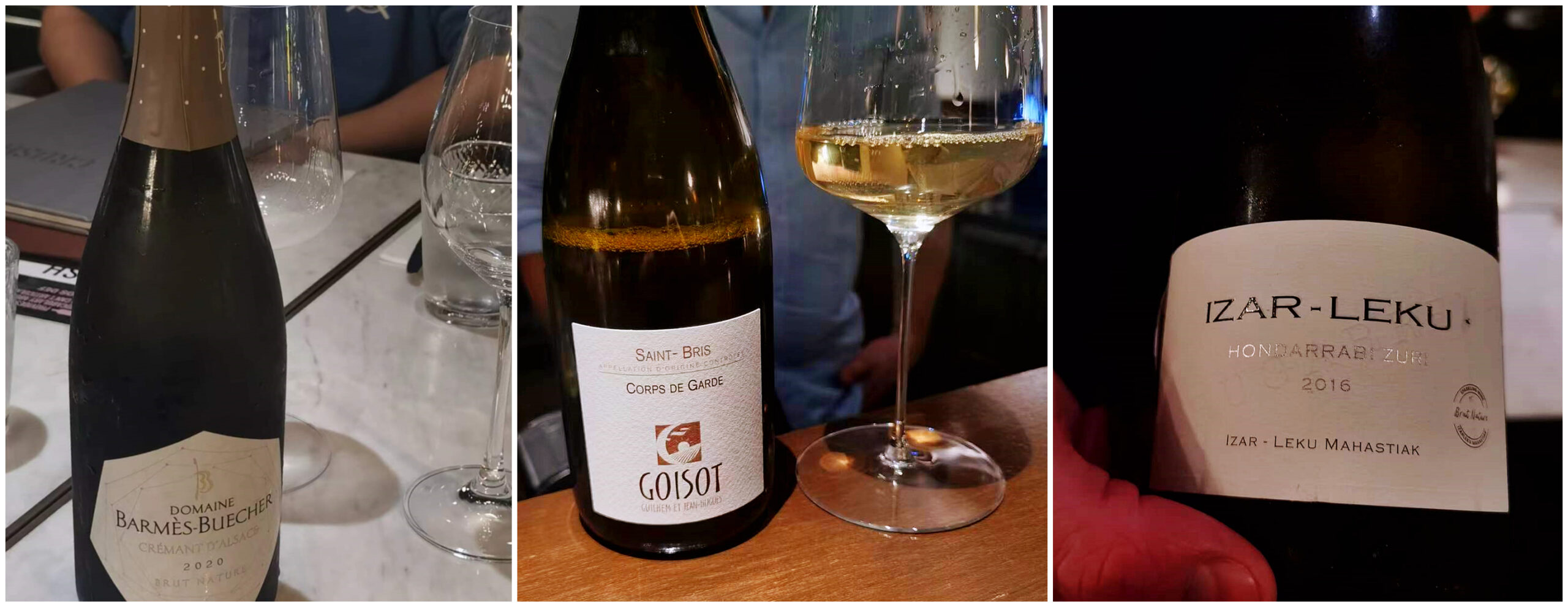
When all is said and done, I had another great evening and dinner at Crush. I normally go with friends and it’s really an ideal place in which to kick back and relax in elegant surroundings, to chatter about wine and food with the owner and amongst us. It was no different this time even though I went by myself and sat alone at the bar, with Elliot more than happy to share his knowledge about the wines and the whys behind his choosing them. Like I said: just a fun, relaxing and informative night.
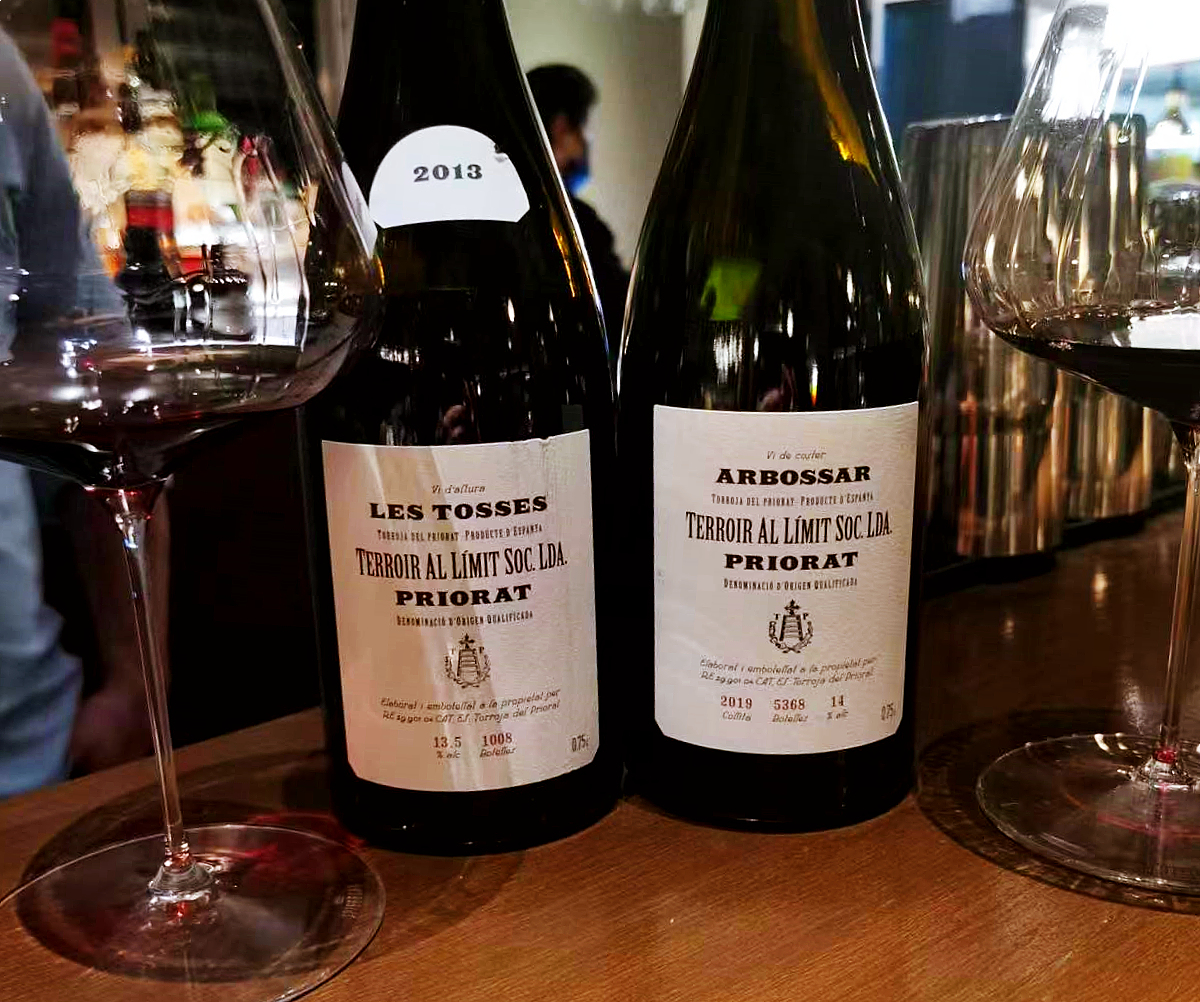

 中文
中文
